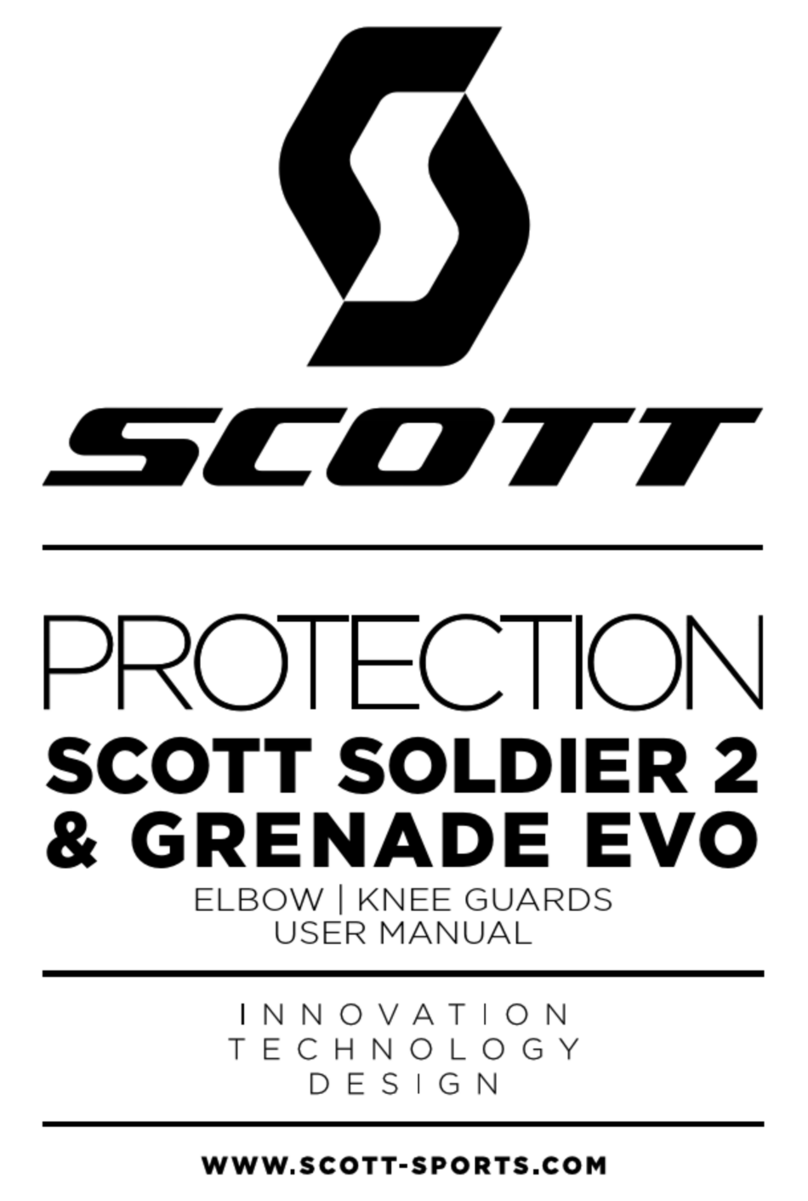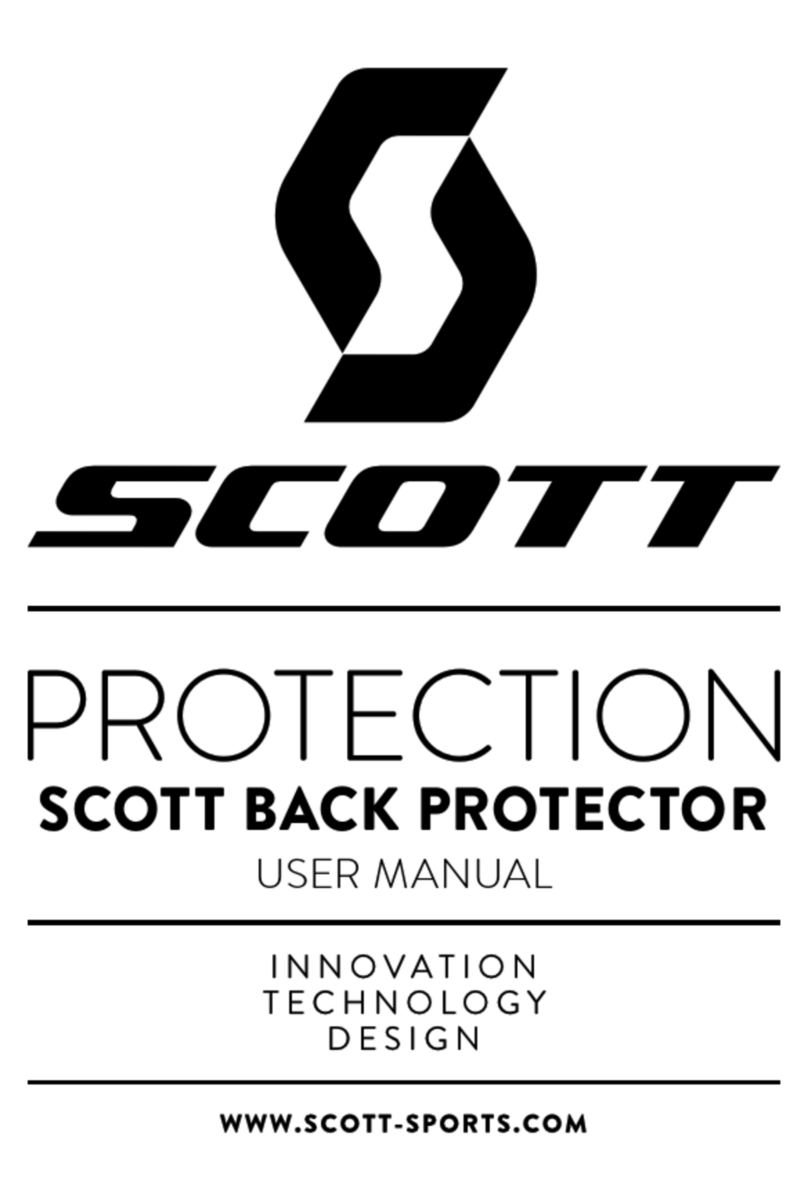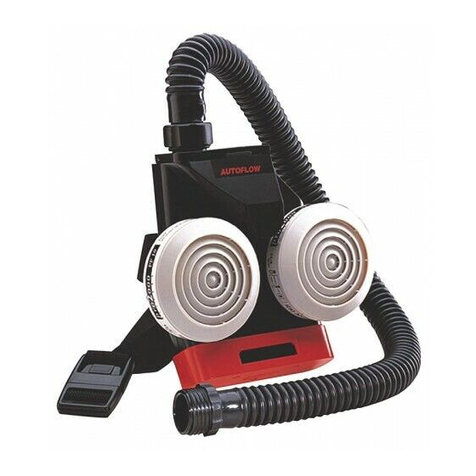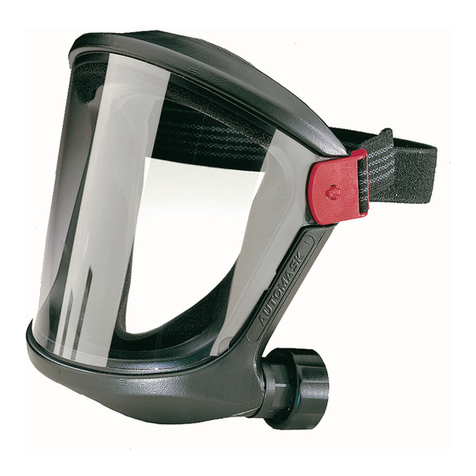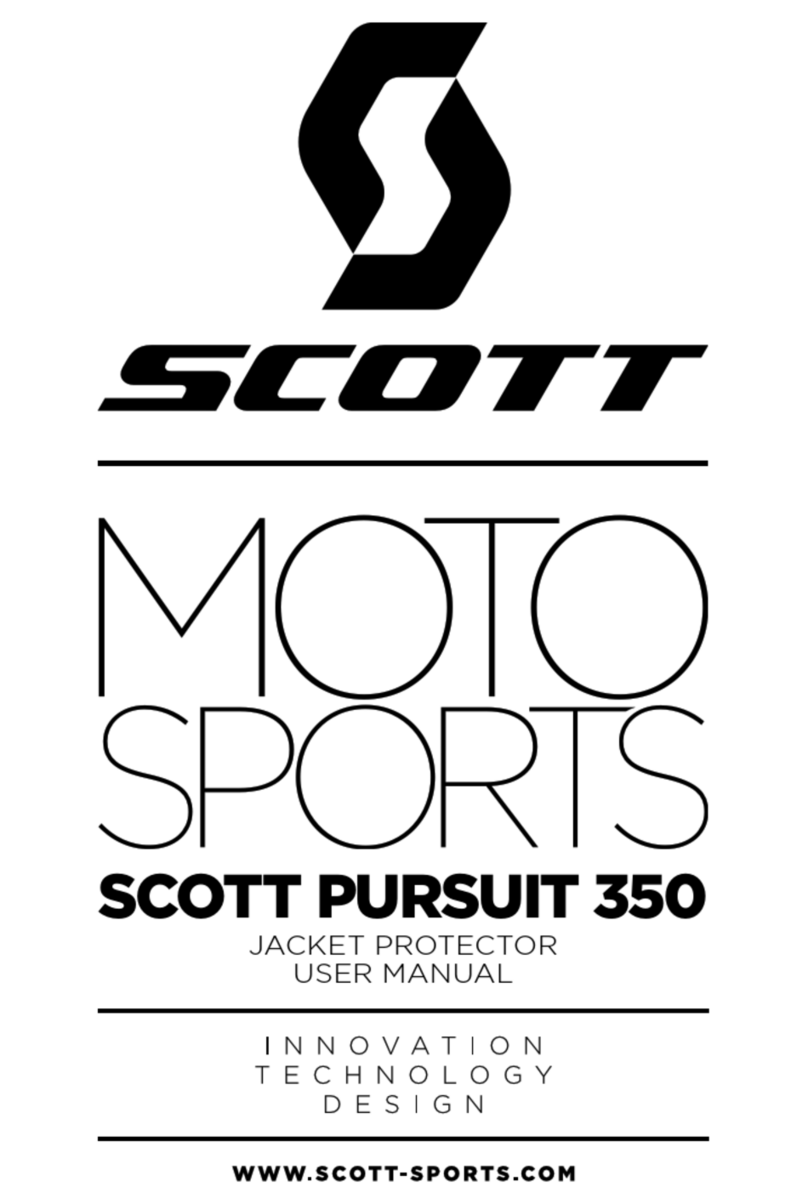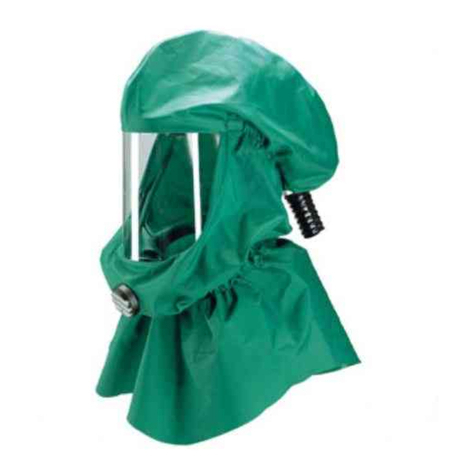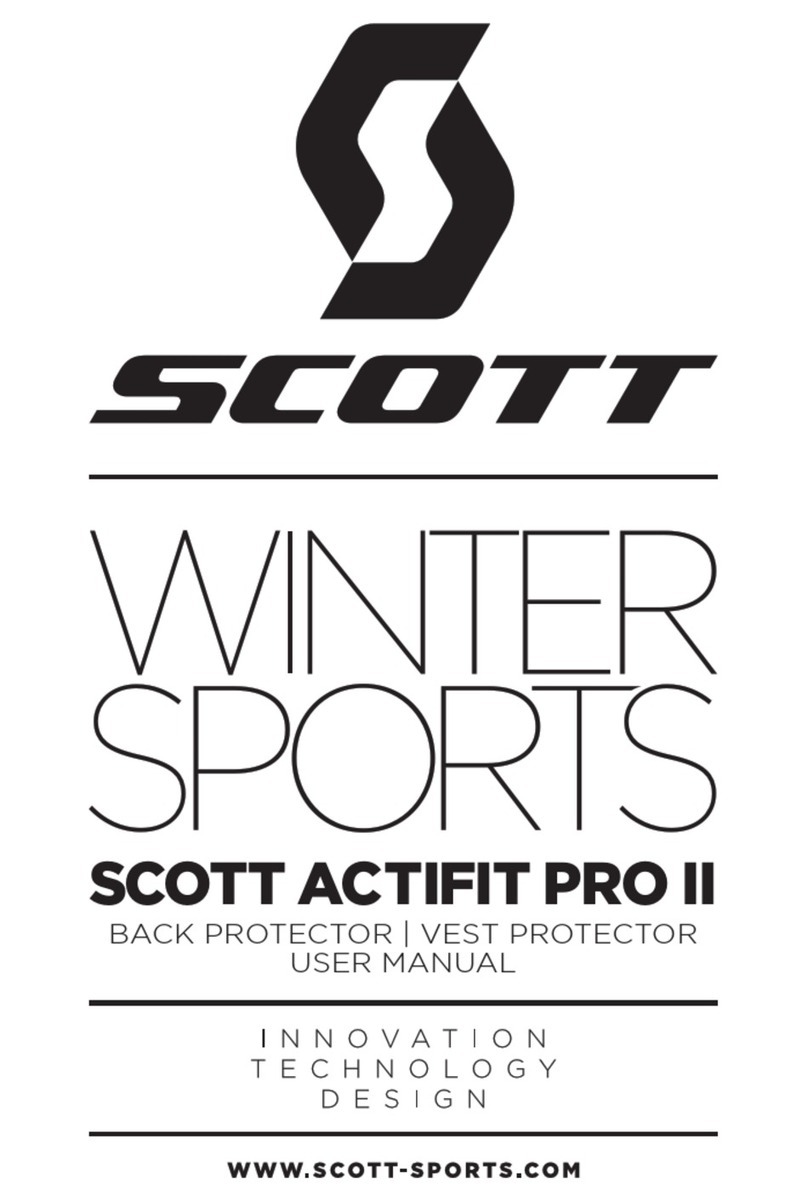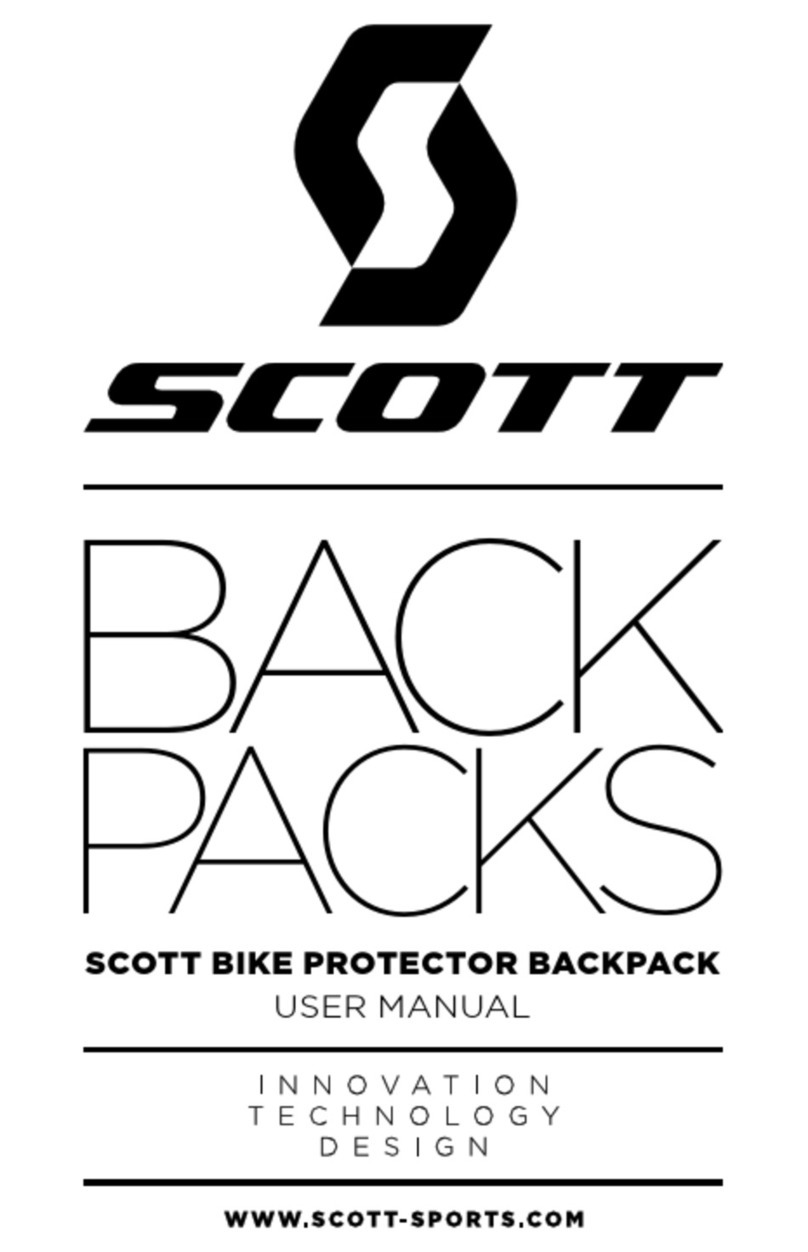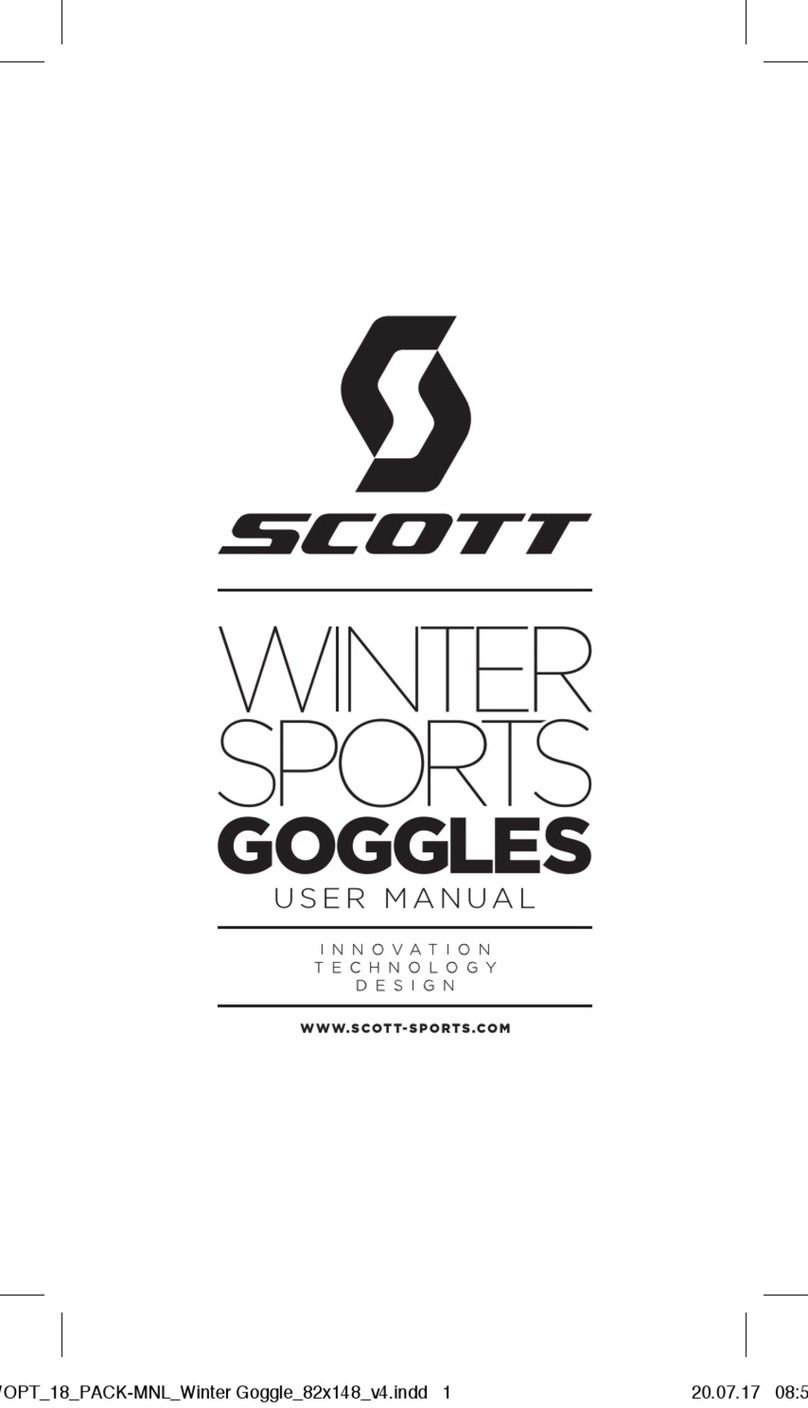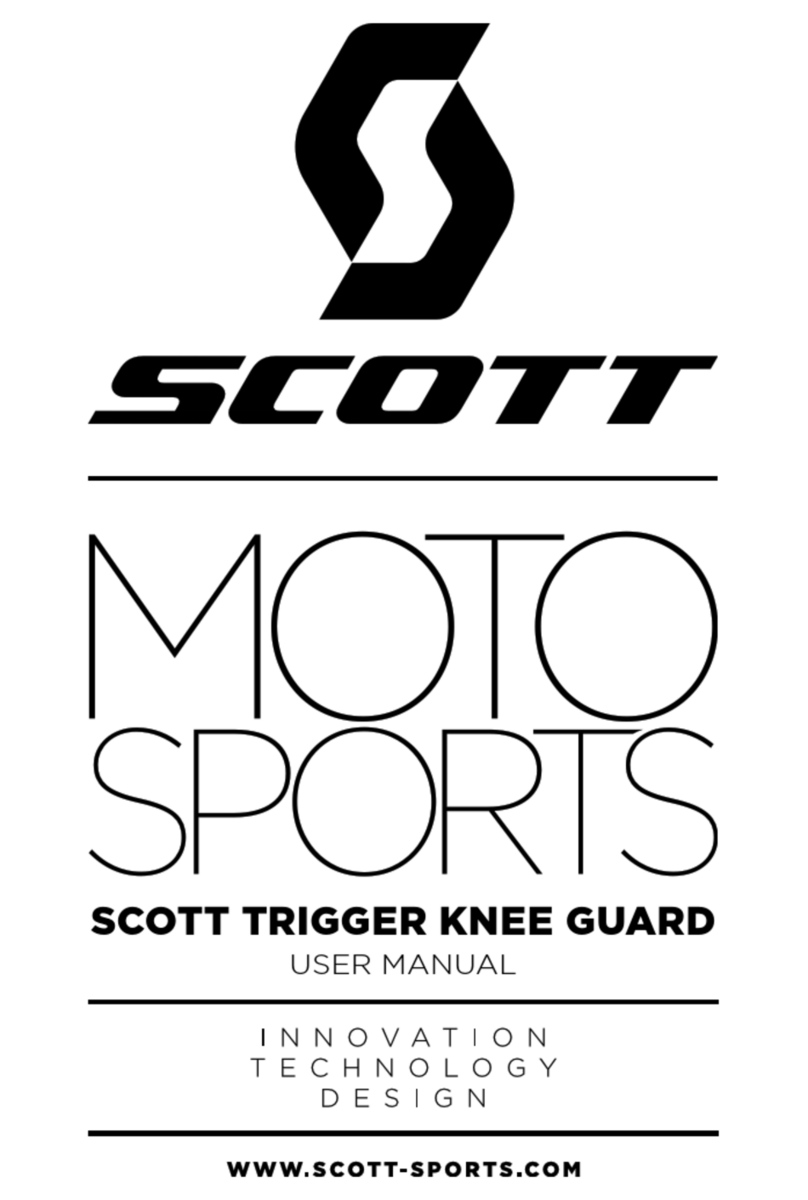
2P/N 595141-01 Rev A 7/08
WARNING
DO NOT OPERATE THIS EQUIPMENT
WHILE UNDER THE INFLUENCE OF
DRUGS, ALCOHOL, OR ANY MEDICA-
TIONS OR SUBSTANCES WHICH MAY
AFFECT VISION, DEXTERITY, OR JUDG-
MENT. USERS OF THIS EQUIPMENT
MUST BE IN GOOD PHYSICAL AND MEN-
TAL HEALTH IN ORDER TO OPERATE
SAFELY. DO NOT USE THIS EQUIPMENT
WHEN FATIGUE PREVENTS SAFE OP-
ERATION. STAY ALERT WHEN
OPERATING THIS EQUIPMENT. INAT-
TENTION OR CARELESSNESS WHILE
OPERATING THIS EQUIPMENT MAY RE-
SULT IN SERIOUS INJURY OR DEATH.
DESCRIPTION
The SCOTT PROFLOW FH22 Hood affords limited protection from contami-
nation caused by some liquid splashes or sprays while providing the
respiratory protection of filtered air from a SCOTT PROFLOW 3 Powered Air
Purifying Respirator (PAPR). The PROFLOW FH22 Hood consists of a poly-
ester coated synthetic fabric hood with inner and outer aprons, an integral
face shield, an adjustable head band, an integral exhalation port, and ac-
cess for attachment of the breathing tube for a PROFLOW 3 PAPR. An
optional Shroud to cover the Breathing Tube is available. This disposable
Hood and Shroud is intended for a SINGLE USE ONLY.
The PROFLOW FH22 Hood is unsuitable for exposure to certain chemicals or
for use in certain conditions. See the CHOOSING THE APPROPRIATE EQUIP-
MENT section of this instruction for details.
The PROFLOW FH22 Hood is available in a one-size to fit most as P/N
200676-01. This same hood is available in packaged quantities under the P/N
200676-XX where -XX denotes the quantity as packaged. The Breathing Tube,
P/N 31001207, is specially designed to connect to his hood. To facilitate de-
contamination of the breathing hose, an optional Hose Shroud to cover the
Breathing Tube, P/N 200677-01, is available, also sold in packaged quantities
where -XX denotes the quantity as packaged.
The PROFLOW FH22 Hood alone does not provide any protection against a
hazardous atmosphere. The PROFLOW FH22 Hood is part of a complete ap-
proved respirator which also includes, a PROFLOW 3 powered air purifying
respirator, the proper filtration media suitable for the hazardous atmosphere
where the respirator will be used, and the breathing tube to connect the Hood
to the PROFLOW 3 respirator. Refer to the NIOSH Approval Label included
with the PROFLOW 3 respirator for a complete listing of hoods and filters
approved for use with the SCOTT PROFLOW 3 respirator.
When used with a PROFLOW 3 PAPR, contaminated air is drawn through the
filtration elements mounted on the PROFLOW 3 blower unit and flows through
the breathing tube to the respiratory inlet on the back of the Hood. Air entering
the PROFLOW FH22 Hood is directed over the top of the head and down the
inner surface of the visor to prevent misting, then inhaled by the wearer. Ex-
haled air passes out through the integral exhalation opening between the inner
and outer aprons on the front of the PROFLOW FH22 Hood. The PROFLOW
FH22 Hood is intended to be used only with a PROFLOW 3 powered air puri-
fying respirator which can supply filtered breathing air at a rate of greater than
6 cubic feet (170 liters) per minute.
Refer to the user’s instructions provided with the SCOTT PROFLOW 3 Pow-
ered Air Purifying Respirator and to the most recent RESPIRATOR
APPROVAL LABEL for the complete respirator. Additional copies of the RES-
PIRATOR APPROVAL LABEL for the SCOTT PAPR are available from your
SCOTT distributor or by calling SCOTT Health and Safety at 1-800-247-
7257.
Do not use this equipment when anything might impair your ability to make
decisions about the safe operation of the equipment.
WARNING
THE SCOTT PROFLOW FH22 HOOD IS
UNSUITABLE FOR EXPOSURE TO CER-
TAIN CHEMICALS OR FOR USE IN
CERTAIN CONDITIONS. SEE THE SEC-
TION OF THIS INSTRUCTION ENTITLED
CHOOSING THE APPROPRIATE EQUIP-
MENT. IMPROPER USE OF THIS
EQUIPMENT MAY EXPOSE THE USER TO
THE HAZARDOUS ENVIRONMENT AND
RESULT IN SERIOUS INJURY OR DEATH.
SCOTT PROFLOW FH22 PAPR HOOD
INSTALLATION AND USE INSTRUCTIONS
WARNING
THIS PROFLOW FH22 HOOD IS INTENDED FOR USE WITH RESPIRATORS WHICH MAY SUPPORT
HUMAN LIFE IN HAZARDOUS ATMOSPHERES. READ AND UNDERSTAND THESE INSTRUCTIONS
COMPLETELY BEFORE INSTALLATION OR USE OF THE PROFLOW FH22 HOOD. FAILURE TO CARE-
FULLY FOLLOW THESE INSTRUCTIONS MAY RESULT IN SERIOUS INJURY OR DEATH.
QUESTIONS OR CONCERNS
If you have any questions or concerns regarding use of this equipment, contact
your authorized SCOTT dealer or distributor, or contact SCOTT at 1-800-247-
7257 (or 704-291-8300 outside the continental United States).


